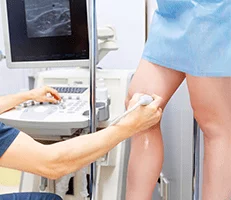What is Peripheral Arterial Disease?
Peripheral arterial disease (PAD) is a condition that causes the walls of the arteries in your legs to narrow so less blood reaches your lower legs and feet. This type of poor circulation is due to atherosclerosis, the buildup of cholesterol deposits along the walls of your blood vessels.
PAD is the most common sign of atherosclerosis, although arteries throughout your body can be affected. When PAD affects the blood vessels in your heart, it’s called coronary artery disease or heart disease.
What are the Symptoms of Peripheral Arterial Disease?
Symptoms of PAD can vary from mild discomfort to serious complications, including:
- The muscles in your feet and legs feeling tired
- Pain in your legs, thighs, and buttocks
- Foot or toe pain when you’re at rest or sleeping
- Slow healing skin wounds or ulcers
- Cramping sensations in the legs and feet
Since peripheral arterial disease symptoms can be mild, many people may think they’re experiencing general muscle aches or weakness related to aging.
If you experience these symptoms, it’s best to be seen by Our Providersfor a thorough exam and treatment if needed.
How is Peripheral Arterial Disease Diagnosed?
To diagnose PAD, you have a quick and painless test to assess the blood vessels in your legs. This test is called a doppler ultrasound and takes just a couple of minutes to complete.
Based on your test results, your provider can recommend an appropriate treatment plan to relieve your symptoms and improve your circulation when possible.
How is Peripheral Arterial Disease Treated?
All cases of peripheral arterial disease can benefit from healthy lifestyle changes, like quitting smoking, increasing your activity level, and maintaining a healthy weight.
If conservative measures aren’t enough to relieve your symptoms or your case is more severe, your provider can prescribe medications to lower your blood pressure or cholesterol, manage your blood sugar, or prevent blood clots.
Different surgical options are available depending on the location and severity of the blockage in your arteries. Some surgeries are more invasive than others, and your provider can discuss all of your options to determine the best course of treatment for your needs.
Find relief from poor circulation caused by peripheral arterial disease by calling us or scheduling a visit online at the location nearest to you.



